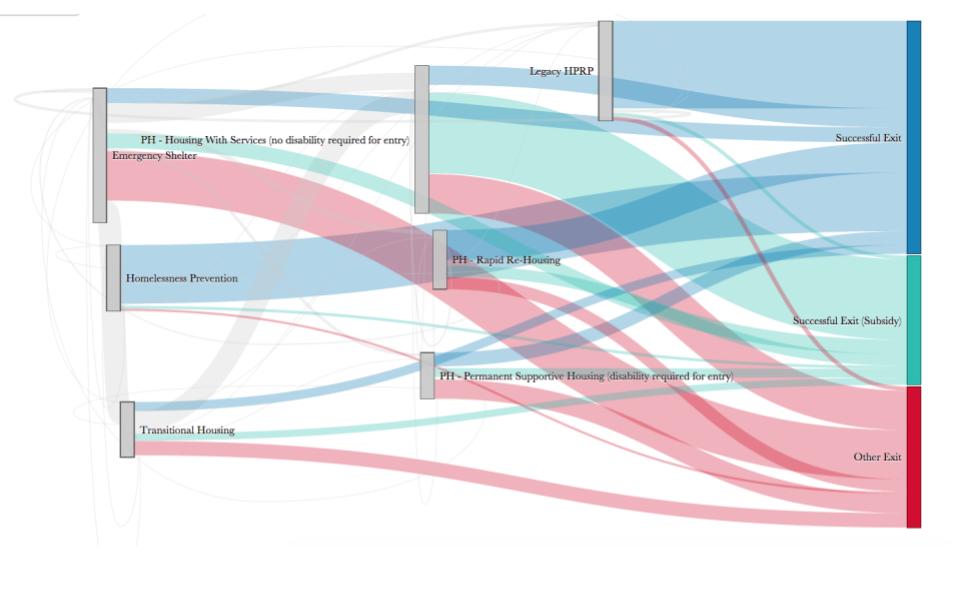Housing stability and homelessness have emerged as major problems that accompany the rapid growth and economic development of cities. For example, Seattle is one of the most rapidly growing big cities in the US, but this growth has been accompanied by an alarming rise in homelessness over the last decade, despite a decrease in homelessness both nation-wide, and in the state of Washington over the same period.
The goal of this research is to understand the factors and services that can help individuals facing homelessness maintain housing stability. We collaborate closely with data analysis teams from the Seattle Department of Health and Human Services and with the Seattle and King County Housing authorities, to understand the data that they are collecting on individuals and families that receive homelessness services and public housing.
We are interested in answering the following questions:
- What are the series of services the individuals and families receive. What are common trajectories of individuals and families through these different services.
- What are the outcomes of different services, as a function of the characteristics of families (their composition, demographics, income and employment, etc.), and the timing of providing these families with these services.
This work is led by Bryna Hazelton and Ariel Rokem with funding support from the Bill and Melinda Gates Foundation.


